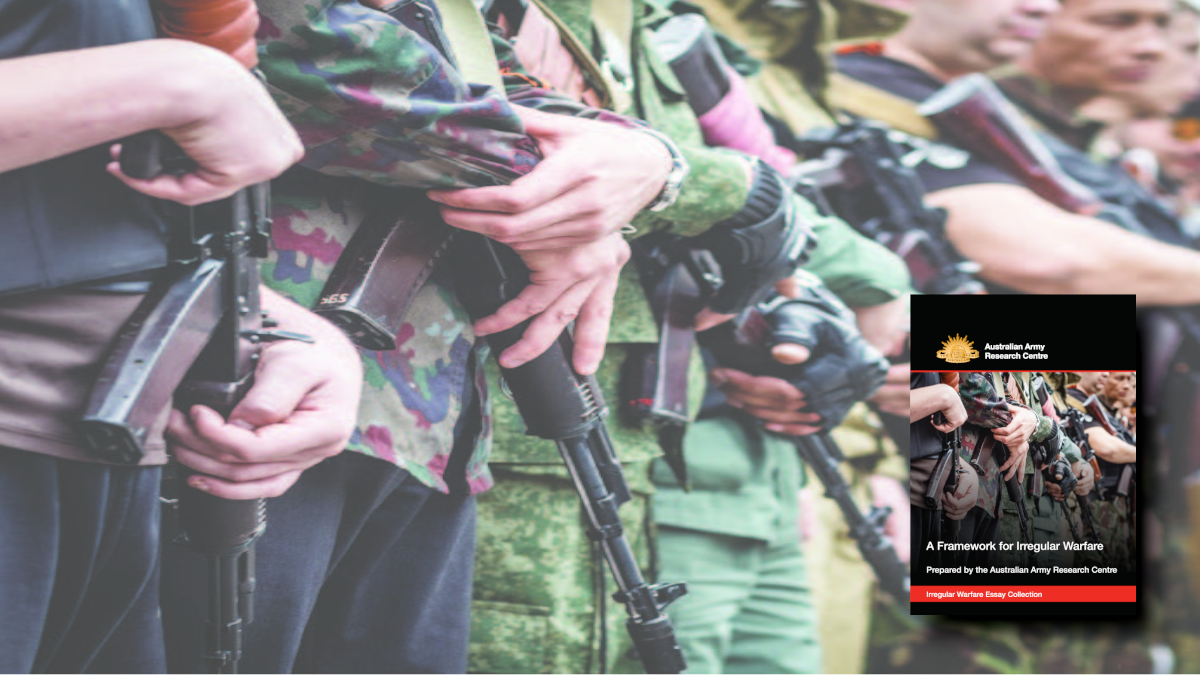Foreword
The Australian soldier has a well-earned reputation for expertise in counter-insurgency. Perhaps this reputation is born from Australia’s experience of the Malayan Emergency, the Borneo Confrontation or the Vietnam War; and it was probably sustained through United Nations deployments as peacekeepers within generally fractured societies. A Framework for Irregular Warfare (the Irregular Warfare Essay Collection), published by the Australian Army Research Centre, responds to this tradition. By examining historical and contemporary conflict, it informs further professional inquiry about how irregular conflicts might manifest in the future.
This inquiry is important. Over the last few years, major irregular conflicts have included the Syrian and Yemeni civil wars, both of which demonstrated a highly interconnected nature through Middle Eastern and global competition.[i] The Afghan conflict smoldered with the rise of the Islamic States’ Khorasan Province, before growing to the runaway bushfire that was its final phase. The civil war in the Congo continues and has now claimed the inauspicious title of the war involving the most casualties since World War II. Russian-sponsored irregulars continue to foment insurgency in the Donbas and expanded their influence in the ongoing Libyan civil war and the Venezuelan uprising. Illicit economies continue to destabilise the writ of the nation-state in Mexico, Honduras, Jamaica and Somalia, creating levels of violence that far surpass that of criminality and, indeed, that of many wars. Competition between Pakistan and India continues to be fought with insurgents and terror actions, such as the Lashkar-e-Taiba raid into Mumbai in 2008. And we have also seen the echoes of Arab Spring protests in movements spanning Iran, Iraq, Lebanon and Belarus.
What these conflicts share in common is the role of the non-state actor—people not belonging to the uniformed armed forces of a nation-state. Many are civilians who have self-mobilised to a cause and have learned the trade of warfighting while immersed in conflict. Consequently, many have seen significant violence, experienced trauma and suffered atrocities. Many of these people are being exploited for the purposes of major power competition in a zero-sum game where simply blocking a sponsor’s military objectives serves to address one’s own strategic agenda. For a nation that values the global rules-based order, this frequency of irregular war portends the ongoing erosion of Max Weber’s notion of a state holding a monopoly on the use of force.
In this context, the relative absence of discourse involving irregular forces must be addressed. The Australian Army prepares for peace and war, but in war one does not have the luxury of deciding how the adversary will chose to pursue their strategic ends. A ‘hybrid’ character of regular, irregular and cyberspace actors will undoubtedly be evident in future conflict; as will the acceleration of adapting new technologies, at the speed of social media. War will be broadcast in real time, laced with disinformation, onto the devices of the Australian citizen, who will judge its efficacy and moral righteousness.
The Irregular Warfare Essay Collection addresses this gap. The essays published in the Collection were selected to provide a breadth of perspectives across case studies, personal experiences and theories of irregular warfare, provided by emergent leaders of our future Defence Force.
2021 Chief of Army Scholar, Andrew Maher introduces the concept of Irregular Warfare in the opening chapter, framing the essays that follow. Chris Webb expands on this foundation by examining insurgency in Southern Thailand, where the influence of Buddhist and Islamist narratives collide. Brooke Barling then compares and contrasts irregular conflicts in Mozambique and Rhodesia from the 1960s through to the 1990s, drawing lessons to advance the theory of Irregular Warfare. Clarence Hovell examines the Tunisian revolution, drawing out common elements despite 60-year intervening period. Finally, Steph Costa takes a gendered lens to violence in the Sudan, demonstrating that it is not enough to understand ‘why men rebel’; irregular violence can be significantly shaped by the experience of women in society.
Army is committed to generating a workforce of dynamic, creative thinkers who can challenge the status quo, make new connections and apply their knowledge across disciplines to real-world problems. By raising the level of professional debate, the Irregular Warfare Essay Collection contributes to this objective by charting a trajectory for the reinvigoration of Australian Army’s expertise in irregular warfare. If it stimulates further professional discourse and study on the topic then it will have ably achieved this aim.
[i] Armed Conflict Location & Event Data, at: https://www.acleddata.com/ (accessed 25 January 2019).




